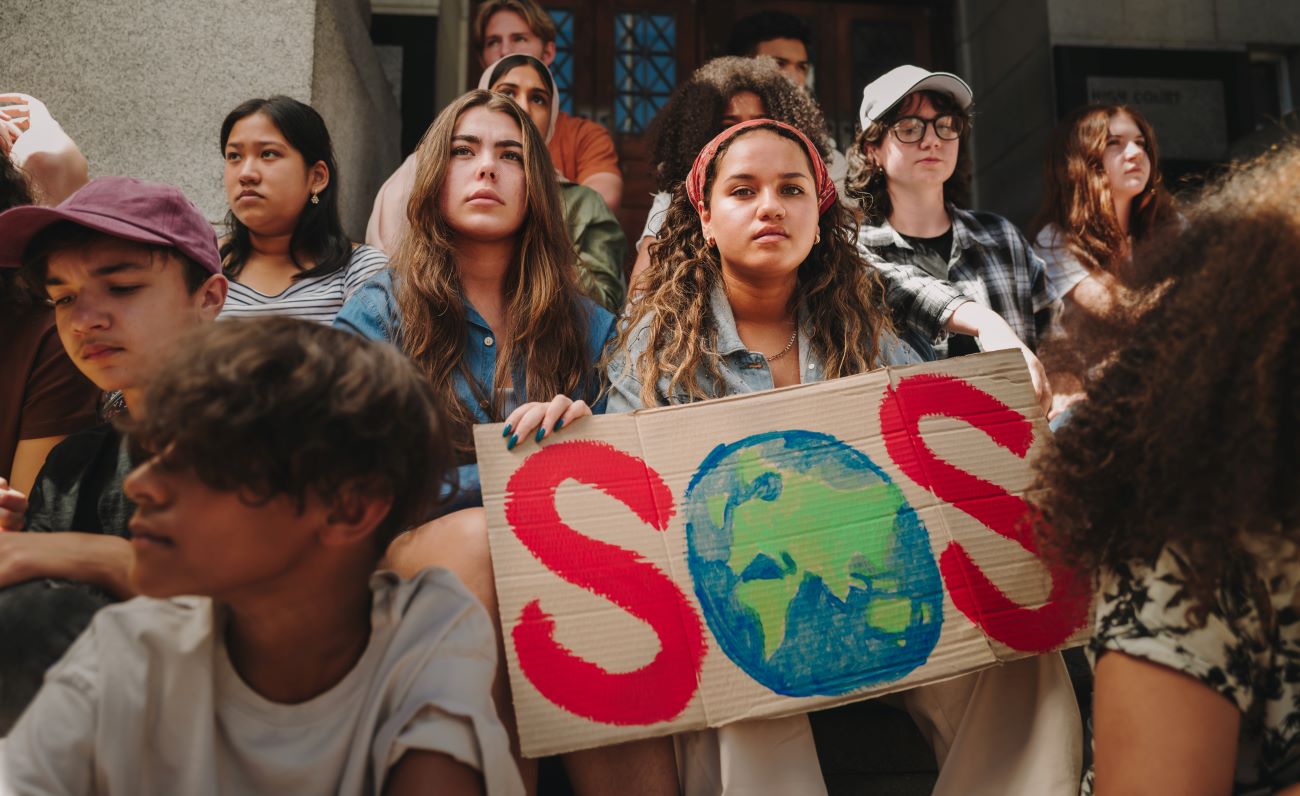Southeast Asia is residence to about one in 5 species of wildlife on Earth. These species could be discovered within the lush forests of Indonesia and Malaysia, and amongst vibrant corals alongside the Philippine coast.
Whether or not these creatures nonetheless have a house in eight years’ time might make or break a pledge made on the world stage final month. On the COP15 biodiversity summit in Montreal, Canada, leaders of practically 200 nations agreed to preserve 30 per cent of the Earth’s lands and seas by 2030. Precedence is meant to be on biodiversity-rich locations.
The 30 per cent goal is a worldwide objective, with no targets prescribed for every nation or area. However utilizing it as a reference towards the newest information on nature safety in Southeast Asia makes clear the massive problem the area faces, whether it is to contribute meaningfully to the worldwide goal.
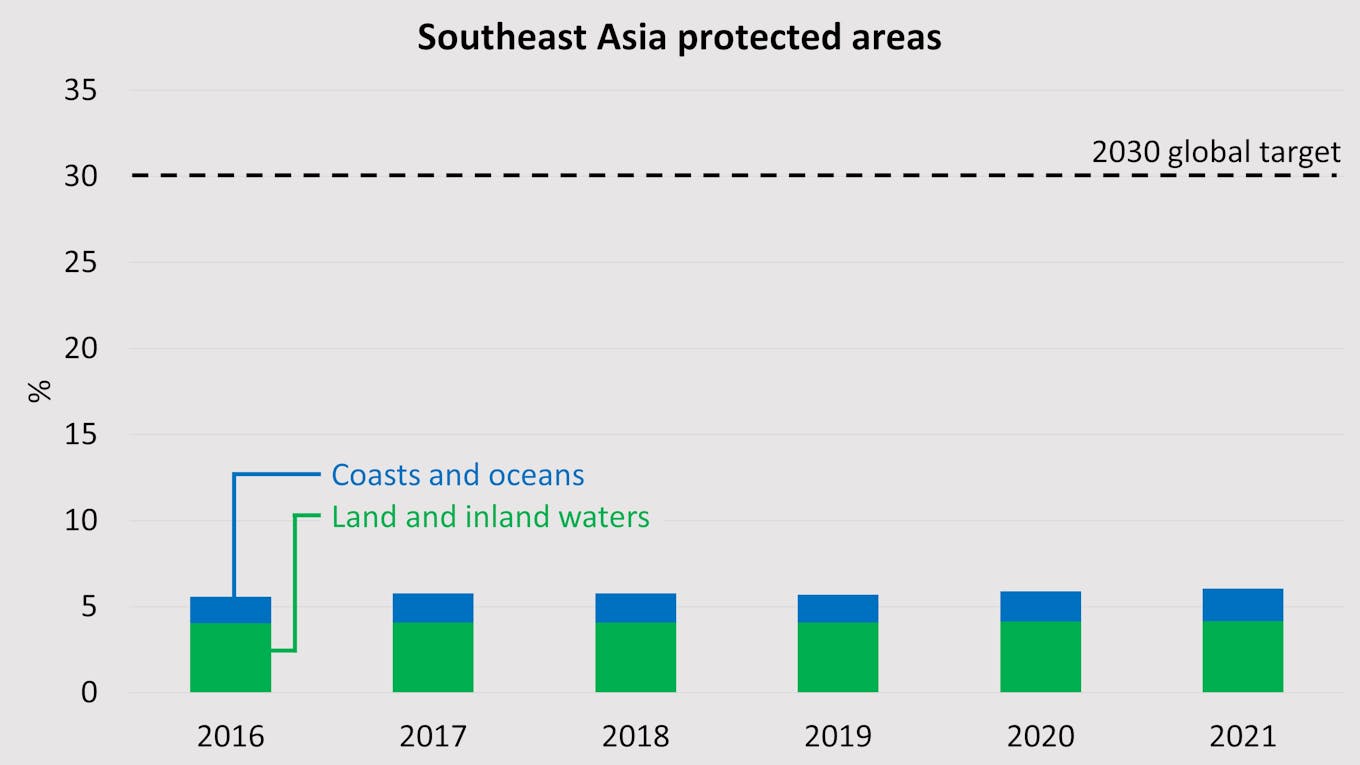
Information: World Database on Protected Areas, by way of Protected Planet.
In line with information from the World Database on Protected Areas, a repository helmed by main conservation teams together with the United Nations Surroundings Programme, simply over 6 per cent of Southeast Asia’s land and territorial waters are at the moment protected. The determine has not modified considerably in a minimum of the final six years, because the de-gazetting of protected areas largely offset any new parks and sanctuaries created.
Which means that the overall measurement of protected areas should buck the inertia and rise five-fold in eight years for Southeast Asia to cross the 30 per cent conservation milestone by 2030.

Information: World Database on Protected Areas, by way of Protected Planet.
Protected nature areas in Southeast Asia and the western Pacific. Marine conservation websites are in blue; land-based ones are in inexperienced. Picture: mapbox, by way of Protected Planet. [click to enlarge]
Extra land – 15 per cent of the overall – is protected than seas – 3 per cent – in Southeast Asia. Such imbalance is a worldwide development. Open waters could be more durable to patrol and implement; the ocean territory of many nations is large. However Southeast Asia’s conservation figures lag the worldwide figures of 16 and eight per cent for land and sea.
Southeast Asia’s marine conservation determine is particularly low, even going by outdated requirements. The worldwide biodiversity objectives of the final decade known as for 10 per cent of the world’s oceans to be protected.
Indonesia, which homes the most important repository of coral reefs on this planet, at round 50,000 sq. kilometres, protects about 3 per cent of its marine territories. The Philippines ranks third on this planet for measurement of its coral reefs, however has lower than 2 per cent of its waters protected.
Plans for brand new marine parks might be more durable to implement as a result of there are extra conflicting pursuits out at sea, in keeping with Surin Suksuwan, a conservation specialist from Malaysia. International locations could need to prioritise transport lanes, in addition to oil and fuel exploration, Surin defined.
Some governments may additionally need to proceed fishing operations in open waters.
“We don’t actually depend upon searching of untamed mammals on land, however we truly nonetheless rely, on an enormous scale, on wild-caught marine fishes,” Surin stated. He added that marine protected areas can function good spawning grounds and finally enhance fish yields, however not all governments take such a long-term view.
Nonetheless, there have been some massive strikes lately. Malaysia created its largest marine protected space, a ten,000 sq. kilometre stretch referred to as Luconia Shoals, off Borneo island in 2019. Indonesia cordoned off over 12,000 sq. kilometres of biodiversity-rich marine areas in its japanese Islands earlier this yr.

Information: World Database on Protected Areas, by way of Protected Planet. Information from 2021 is proven.
Solely two Southeast Asian nations, Brunei and Cambodia, preserve over 30 per cent of their land. Nevertheless, these are comparatively small states, representing solely about 5 per cent of Southeast Asia’s complete landmass.
Indonesia, the most important Southeast Asian nation by a large margin, conserves about 13 per cent of its land space.
Having safety standing is not any foolproof assure; a lot will depend upon the high-quality print of what actions are permissible, the power of enforcement and whether or not common opinions are carried out. Below a fifth of protected areas in Southeast Asia endure effectiveness evaluations, in keeping with the World Database on Protected Areas.
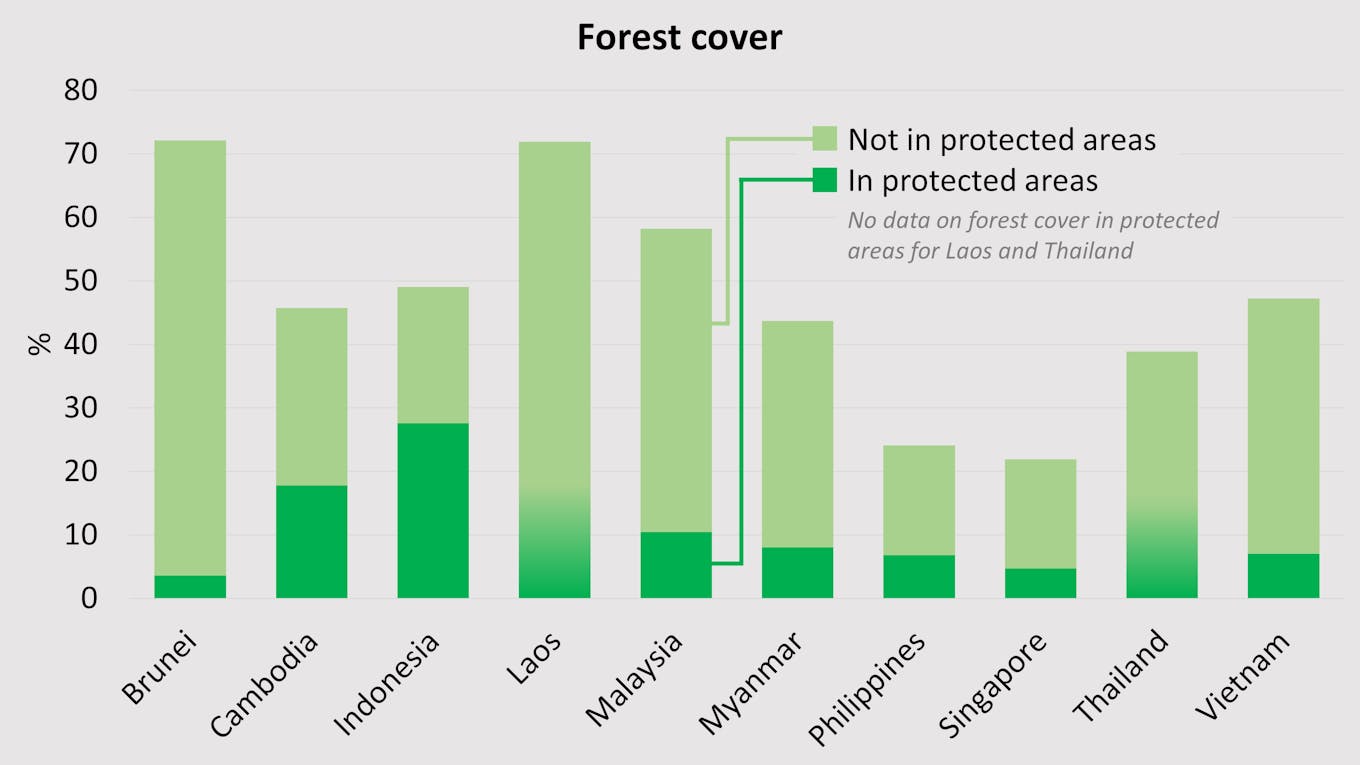
Information: Meals and Agriculture Group. Information from 2020 is proven.
Tropical forests dominate the pure panorama of Southeast Asia. Such biomes are residence to an enormous assortment of wildlife, and might retailer carbon dioxide to sluggish world warming. Some nations, akin to Indonesia and Malaysia, have sizable forest cowl, however many plots aren’t protected.
Agriculture is the principle perpetrator for large-scale deforestation; jungle patches close to settlements are additionally being eroded as extra homes are constructed for the area’s burgeoning inhabitants. Deforestation has been blamed for worsening floods in Malaysia.
International locations akin to Thailand and the Philippines might be “reaching their potential” in defending extra forests, since they presently have comparatively low forest cowl, stated Surin. He stated these nations might nonetheless preserve different ecosystems, like swamps, rivers and stone outcrops, which do host uncommon species.
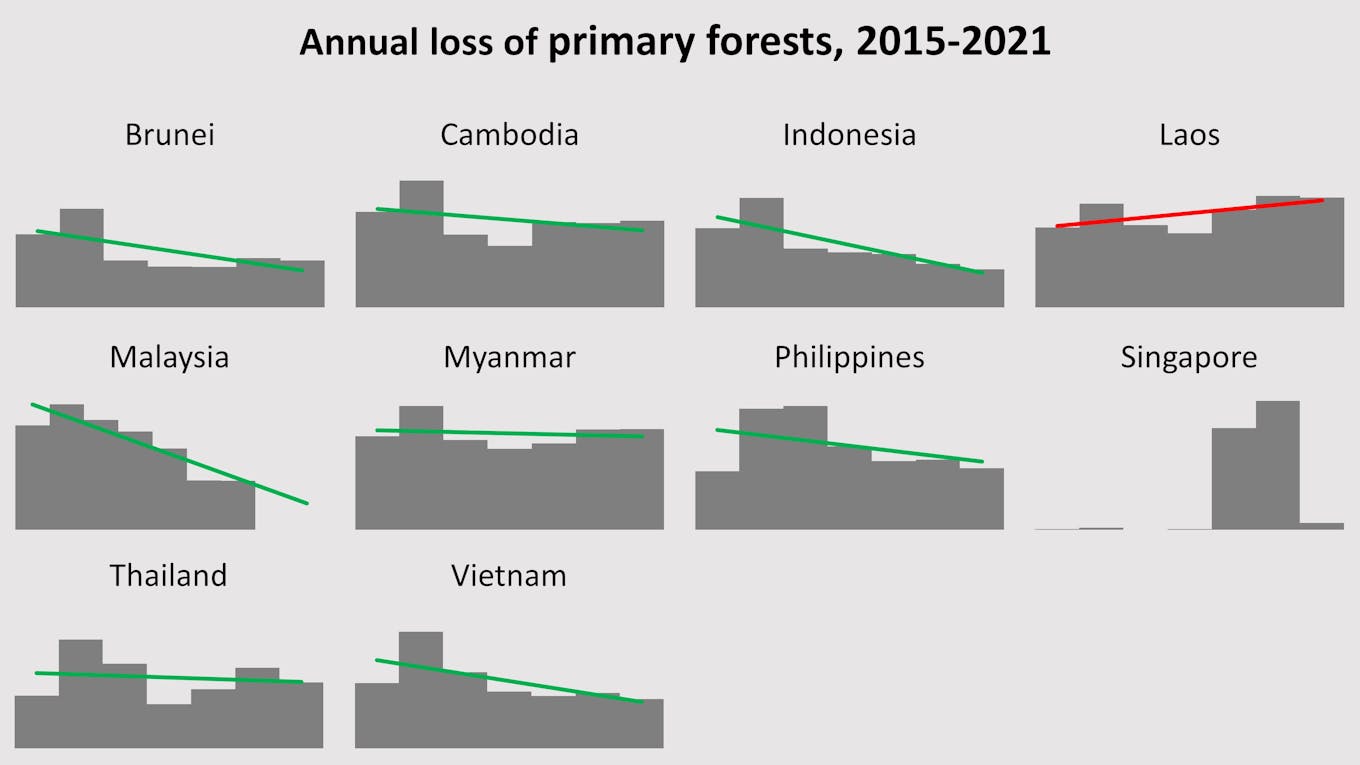
Information: World Forest Watch.
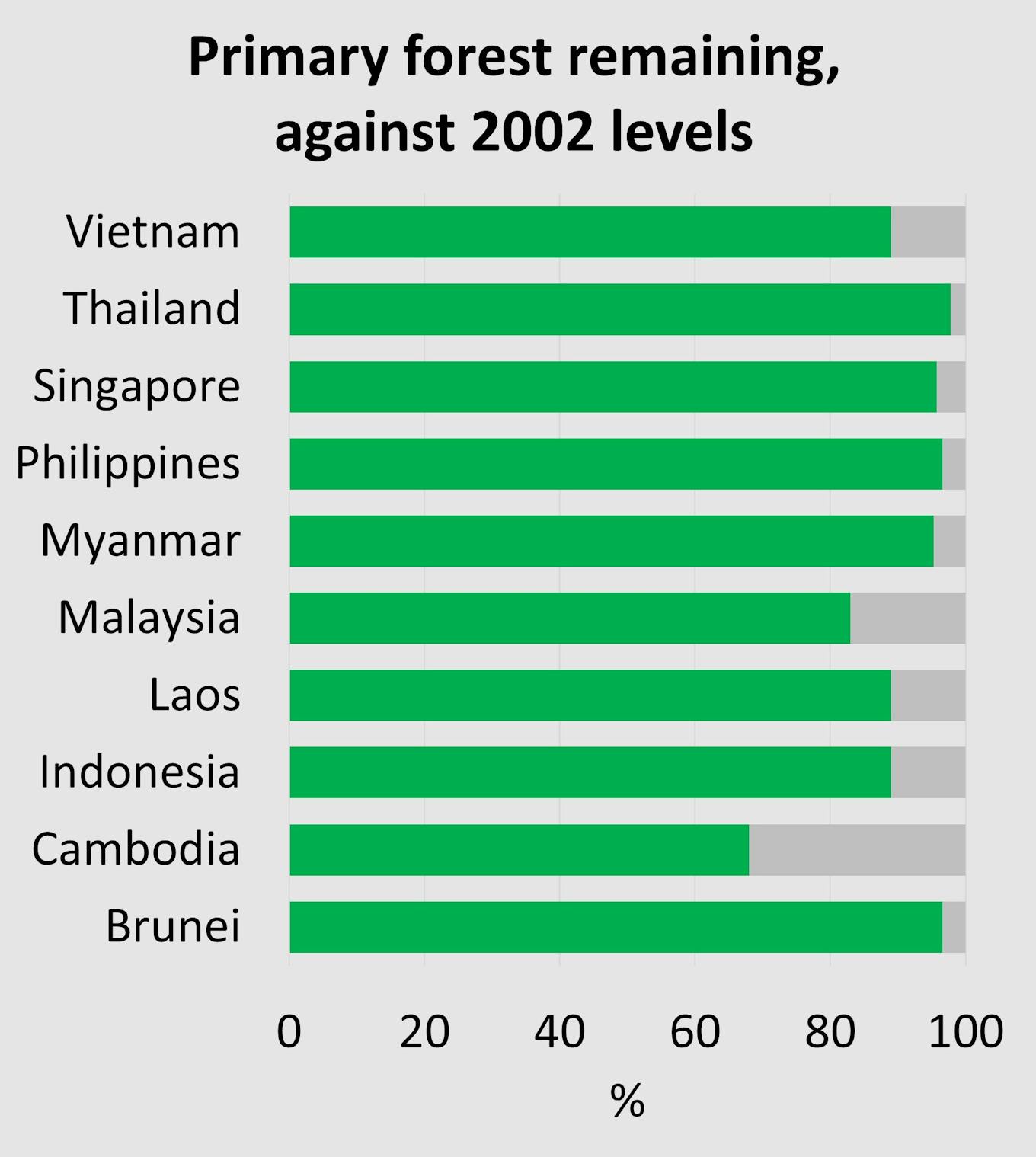
Information: World Forest Watch.
In the meantime, Southeast Asia remains to be mowing down ‘major’ forests, or pristine stands that haven’t been touched by people for hundreds of years or extra.
The lack of such plots has slowed down in most nations, although the speed of major forest loss since round 2019 is once more creeping up in locations like Cambodia and Myanmar.
Laos, in the meantime, is seeing a cussed enhance in major forest loss since 2015.
Zeng Yiwen, a researcher on the Nationwide College of Singapore’s Centre for Nature-based Local weather Options, stated land used to yield larger returns when transformed into farms or mines, however the steadiness is tipping to favour conservation with the maturing of carbon markets, the place corporates and governments pay to maintain forests intact.
“Conservation should additionally contain and contemplate the wants of individuals dwelling in or close to the protected areas. Figuring out how such financial and social elements have an effect on our potential to safeguard forests and their species is vital to conserving nature for future generations,” Zeng added.
The ultimate textual content at COP15 repeatedly known as for the participation of Indigenous and native communities in conservation initiatives.
New funding preparations for creating nations agreed to at COP15, to the tune of US$30 billion a yr by 2030, might additionally increase conservation efforts.
“Defending biodiversity is just not low-cost. You have to be certain there are adequate funds for folks to hold out higher patrolling and enforcement. Individuals should be paid,” Surin stated, including that larger technical data and having political will are additionally wanted.
Southeast Asia had not been ardent supporters of the newest 30 per cent conservation goal within the lead-up to COP15. As not too long ago as June this yr, when some 100 nations globally have already voiced assist for the goal, Cambodia was the one Southeast Asia nation to be a part of that group.
An observer had stated then that nations within the area might be cautious of being informed to set nationwide 30 per cent conservation targets.


